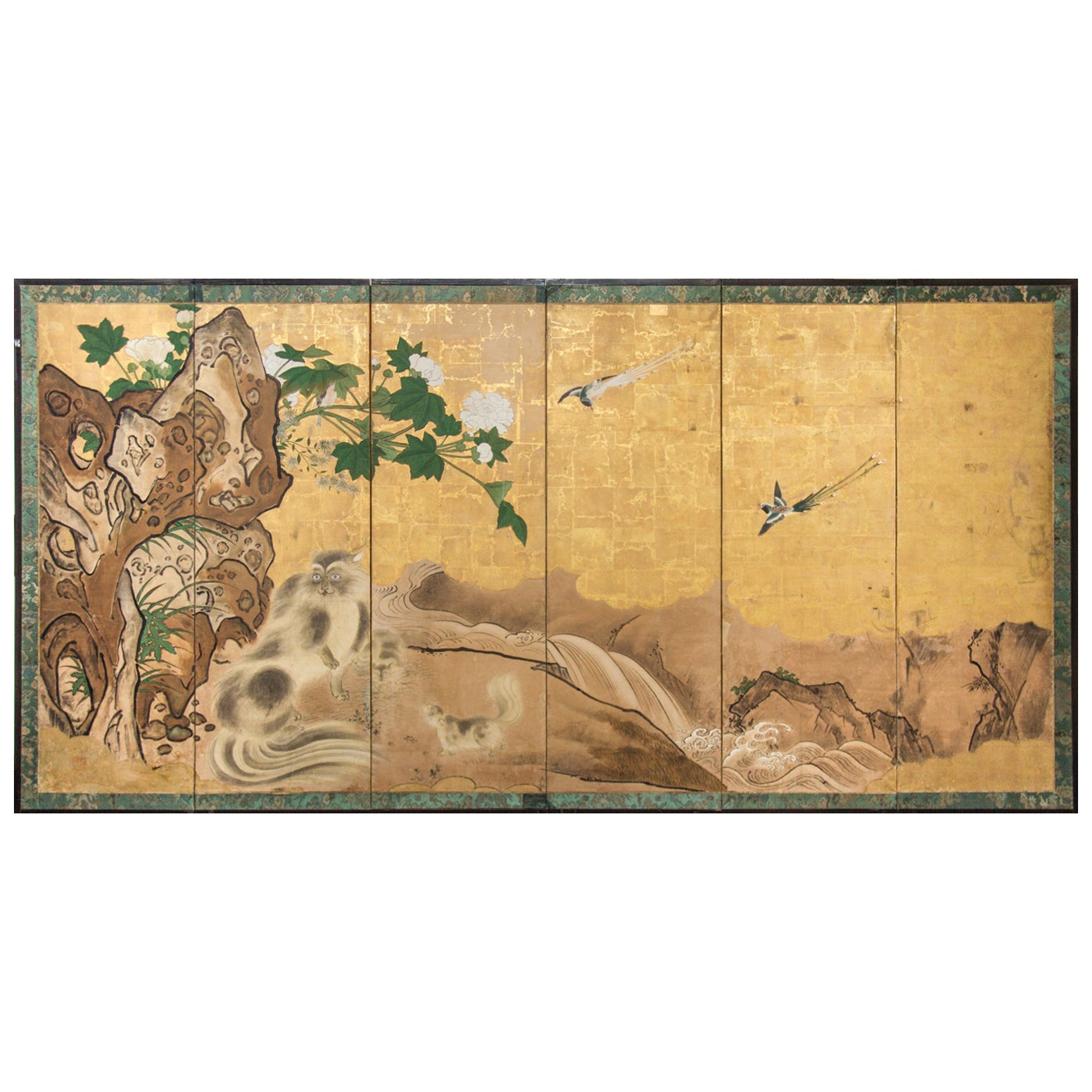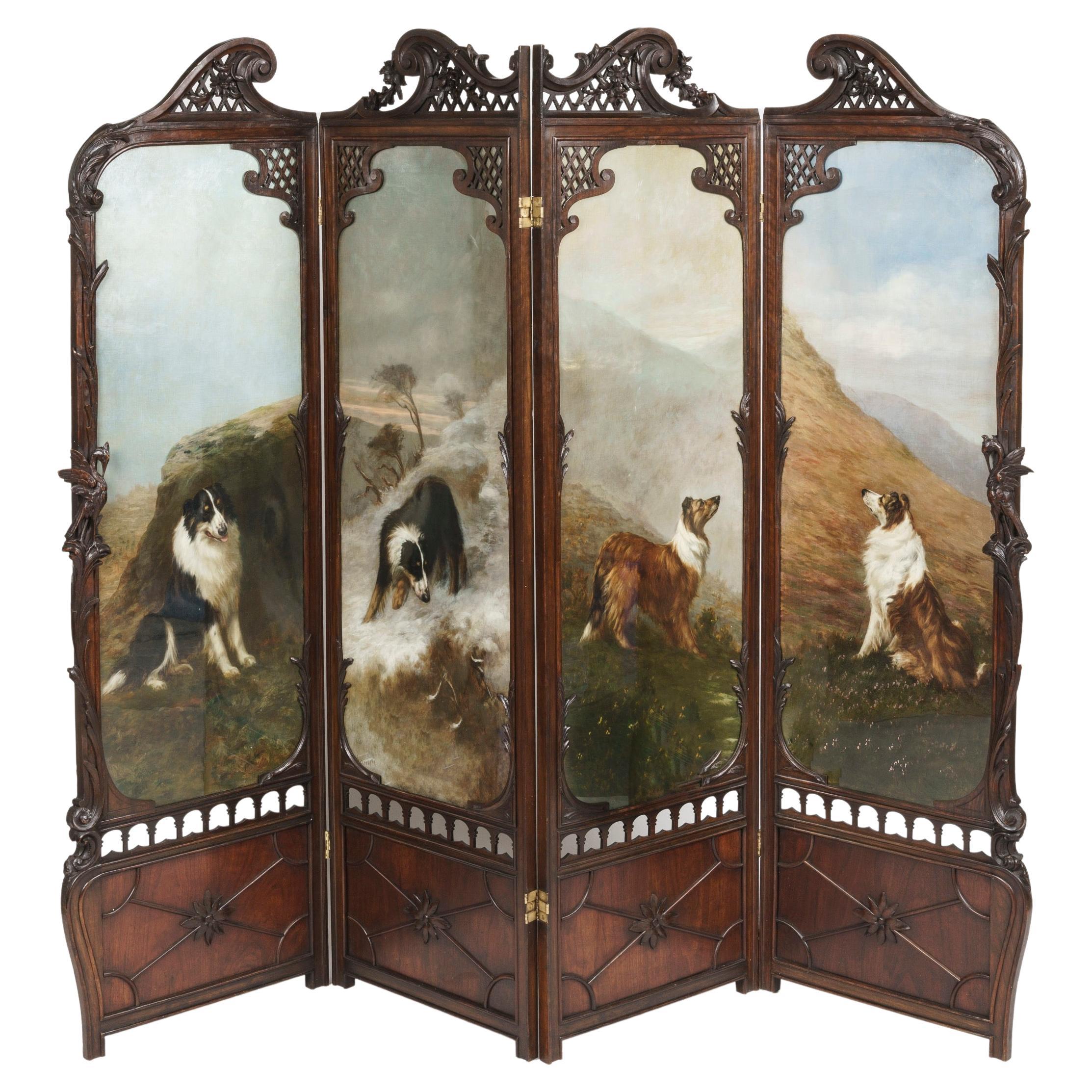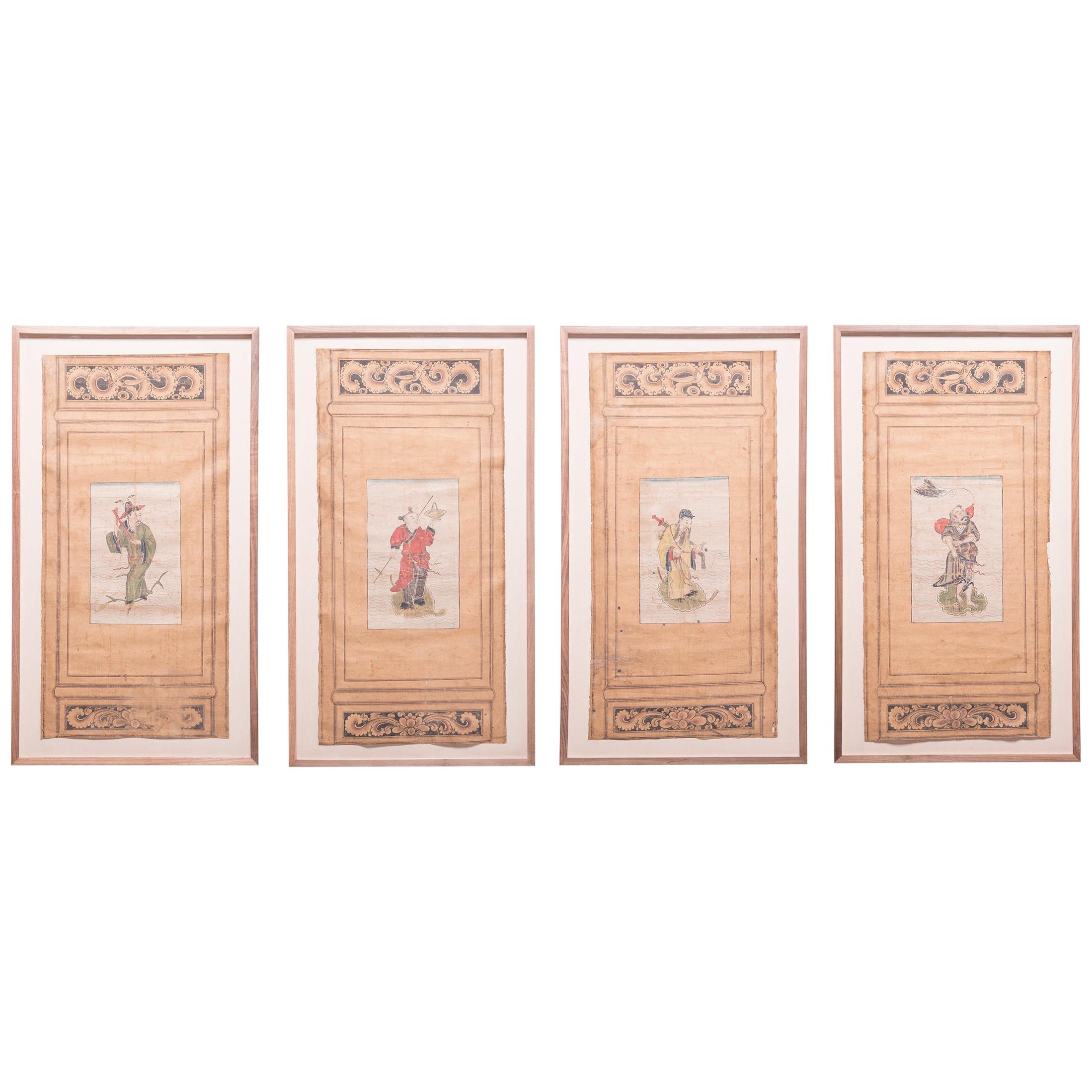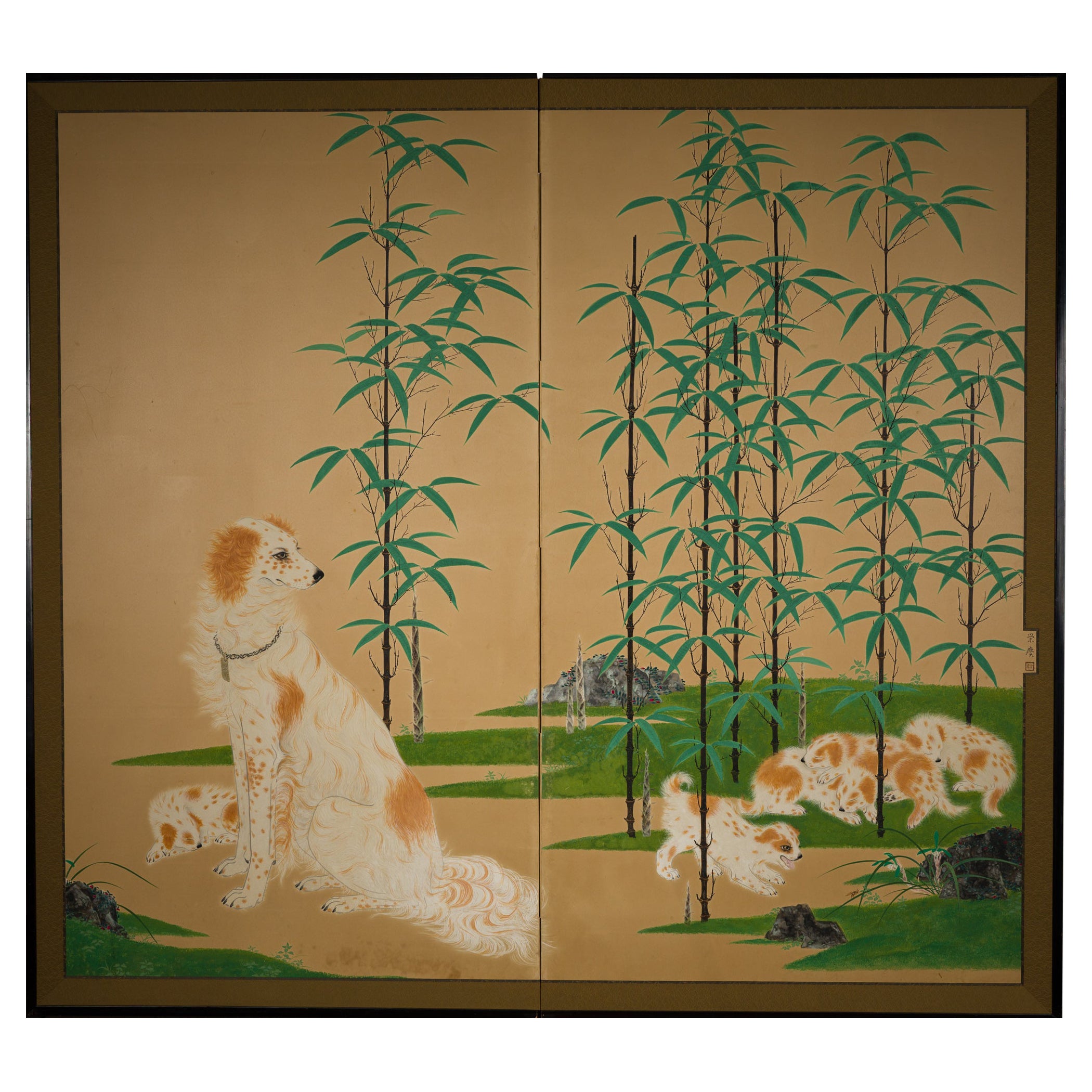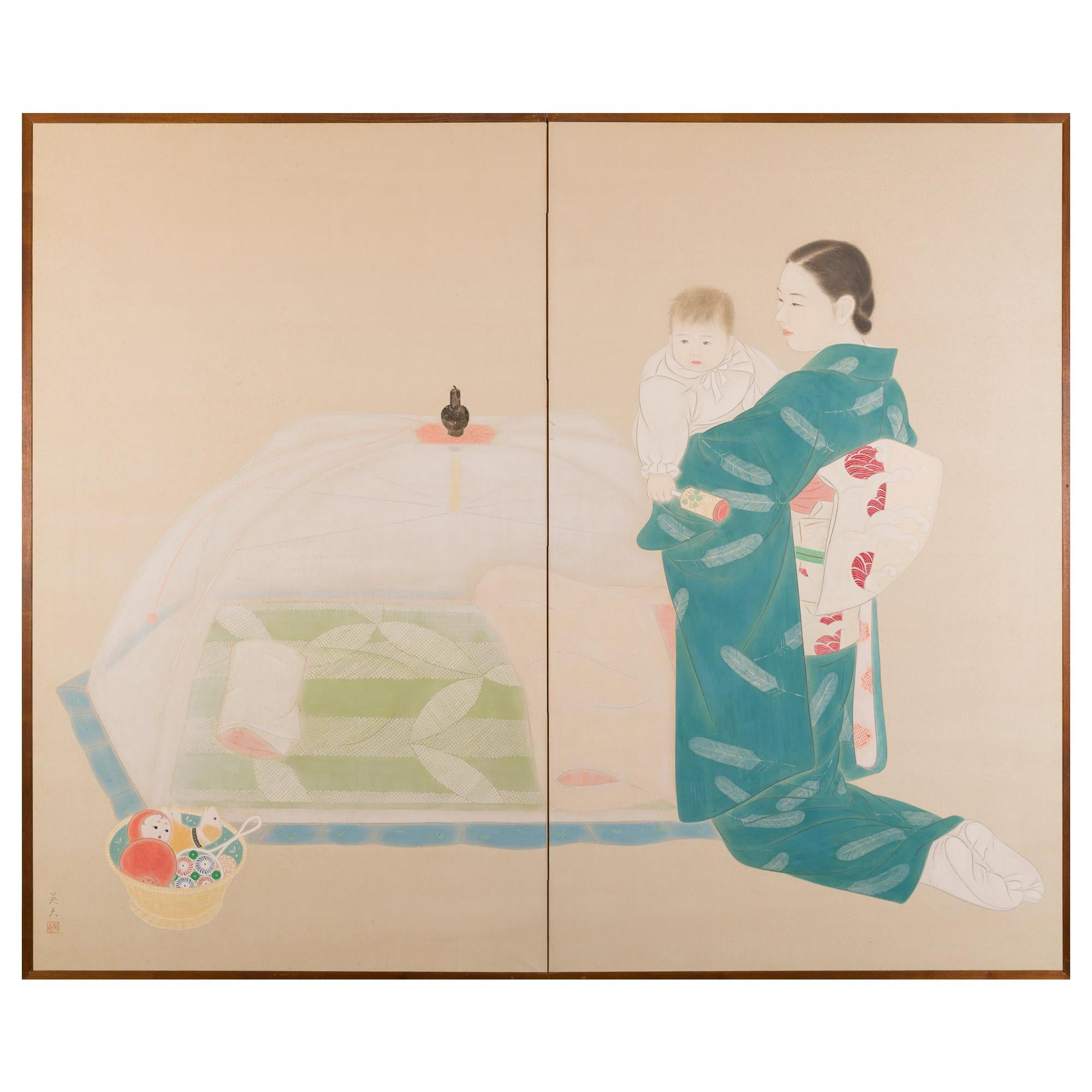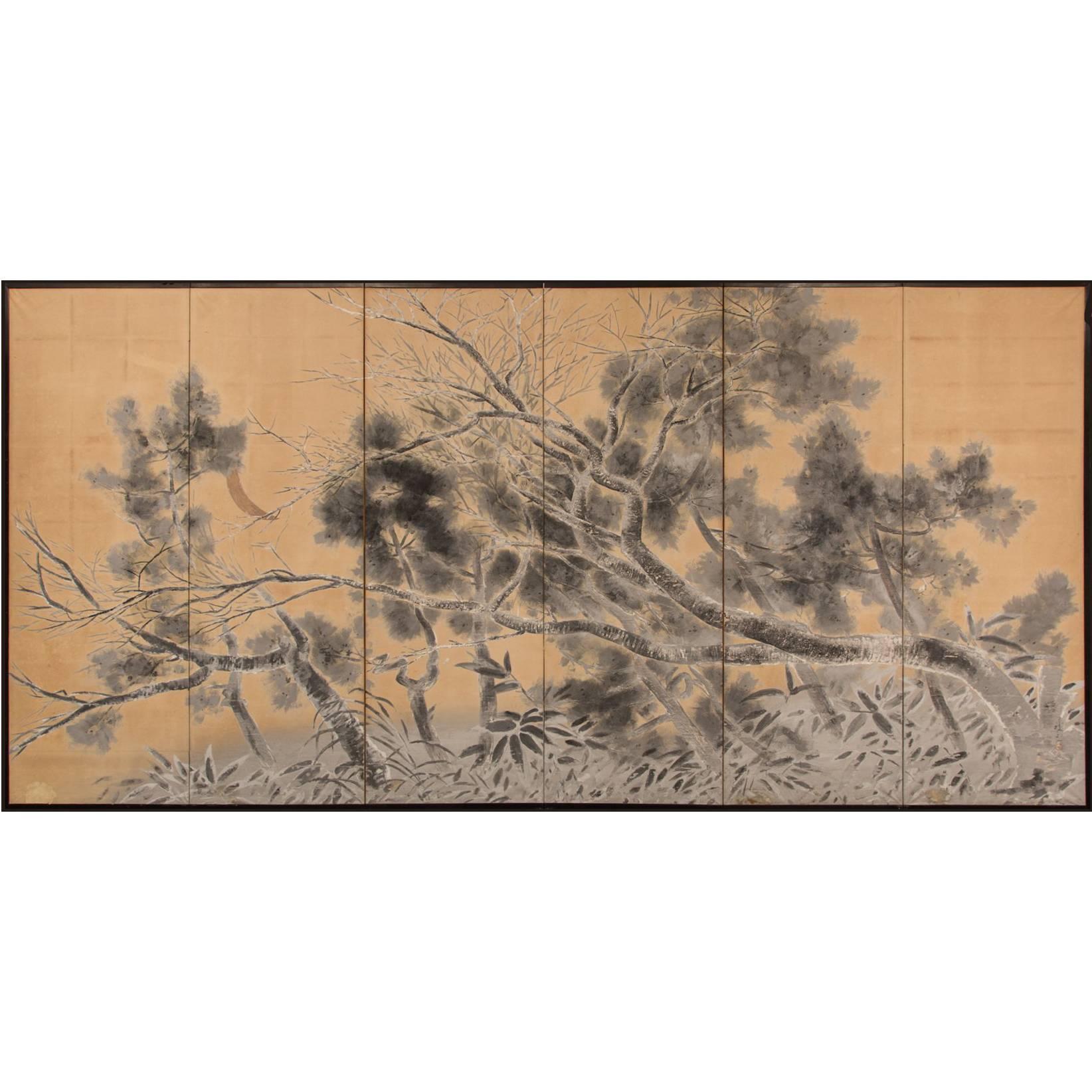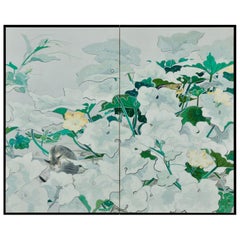
Neagiri Tomiji Screen Painting of a Mother Cat & Kittens
View Similar Items
1 of 4
Neagiri Tomiji Screen Painting of a Mother Cat & Kittens
About the Item
- Creator:Neagari Tomiji (Artist)
- Dimensions:Height: 68.63 in (174.33 cm)Width: 66.5 in (168.91 cm)Depth: 1 in (2.54 cm)
- Style:Taisho (Of the Period)
- Place of Origin:
- Period:
- Date of Manufacture:Circa 1928
- Condition:
- Seller Location:Orcas, WA
- Reference Number:1stDibs: LU9589741795
You May Also Like
- Japanese Six Panel Screen Mother Cat and Kittens Near Rushing StreamLocated in Hudson, NYKano School painting, in mineral pigments and gold leaf on mulberry paper with a silk brocade border. Artist seal reads: Hokkyo Unsen.Category
Antique Early 19th Century Japanese Paintings and Screens
MaterialsGold Leaf
- Japanese Screen Painting, Cat & Pumpkin Patch. Showa Era, 1940sLocated in Kyoto, JPChuichi Konno (1915-2006) Cat and Pumpkin Patch Showa period, 1940s. Folding screen in two-panels. Painted on paper with mineral pigments and gofun. Sign: Chuichi Sea...Category
Vintage 1940s Japanese Showa Paintings and Screens
MaterialsPaper, Wood
- Japanese Painting, Hanging Scroll, 'Playful Cat' by Hirose Toho, 1920s TaishoBy Hirose TohoLocated in Kyoto, JPPlayful Cat Hirose Toho (1875-1930) Hanging scroll, ink, mineral pigments and gofun on silk. Painting inscription: Toho Sha Painting seals: Upper - Hirose Hitoshi Lo...Category
Vintage 1920s Japanese Taisho Paintings and Screens
MaterialsSilk
- Japanese Screen of Spring on Gold LeafLocated in Brescia, ITIt is a two-panel screen from the Taisho period, around 1920, beautifully painted in excellent detail. The best of Rinpa's school painting: large empty space that highlights a pair of mandarin ducks in the middle of the pond. On the right, flying birds give the painting a great lightness, under many multicolored flowers they celebrate spring. All very proportionate and pleasant, the dimension really interesting. Mineral pigments on gold leaf. It turns out Anonymous. Lucio Morini.Category
Early 20th Century Japanese Taisho Paintings and Screens
MaterialsGold Leaf
- Antique hanging scroll of Japanese cat/Late Edo-Meiji period/Cat paintingLocated in Sammu-shi, ChibaThis is a picture of a cat drawn by a person named "Toshizumi Nitta" from the end of the Edo period to the beginning of the Meiji period. She is a very simple and cute cat. He is a vassal of the Tokugawa Shogunate, born in Ota City, Gunma Prefecture (southern part of Gunma Prefecture). He was related to the Tokugawa family and lived in a large mansion in the Ota clan in Gunma prefecture. However, the Nitta family's territory was very small, and they were by no means a wealthy vassal. He seems to have lived quite poorly. So he painted cats and sold them to people. The Nitta family continued to draw pictures of this cat for four generations. "Nitta toshizumi" is equivalent to the fourth generation. During the Edo period, sericulture was thriving in the Kanto region. Cats were said to be the gods of silkworms, as they drive away mice, the natural enemies of silkworms. It was the Nitta family who drew such a cat on paper, pasted it in the silkworm chamber, and sold it as a mouse repellent. There were also other monks who painted pictures of cats, but the Nitta family in particular was related to the Tokugawa family, so people believed that paintings of cats had special powers. , a lot of paintings...Category
Antique Late 19th Century Japanese Edo Paintings
MaterialsPaper
- Pair of Japanese Taisho Period Screens Paragons of Filial PietyLocated in Rio Vista, CAImpressive pair of Japanese screens from the Taisho period meiji. Each six-panel screen depicts an image from the 24 paragons of filial piety ...Category
20th Century Japanese Taisho Paintings and Screens
MaterialsBrass, Gold Leaf
Recently Viewed
View AllMore Ways To Browse
Japanese Panel Gold Leaf
Kyoto Japan Silk Screen
Chinese Lacquer Antique Screens
Philippine Skirt
Japanese Screen Heron
Wataru Hatano
Lotus In Pichwai
Pair Of Chinese Ancestral Portraits
Erotic Pillow Book Chinese
Heron Chinese Panel
King Abdulaziz
Antique Thankas
Rajhastani On Sale
Early Ming Fresco Painting
Wah Cheong
Joseon Painting
Joseon Paintings
Falcon Japanese Art
